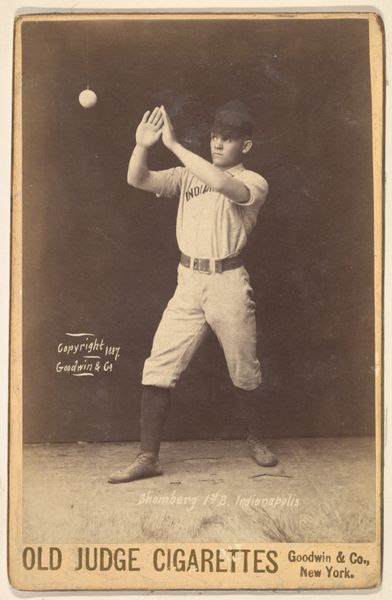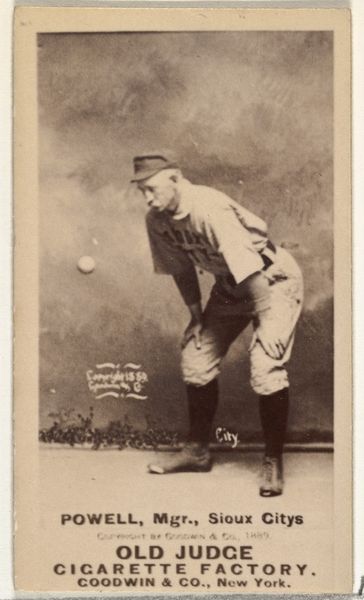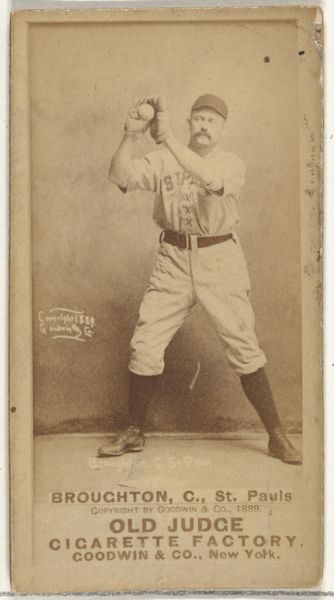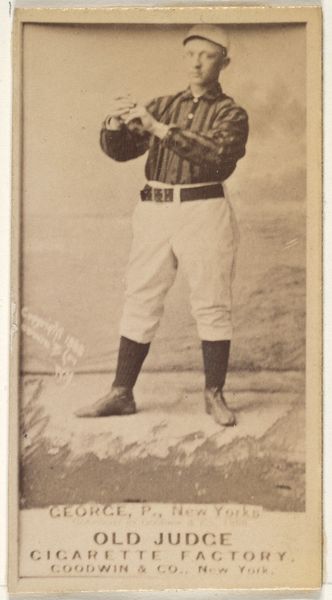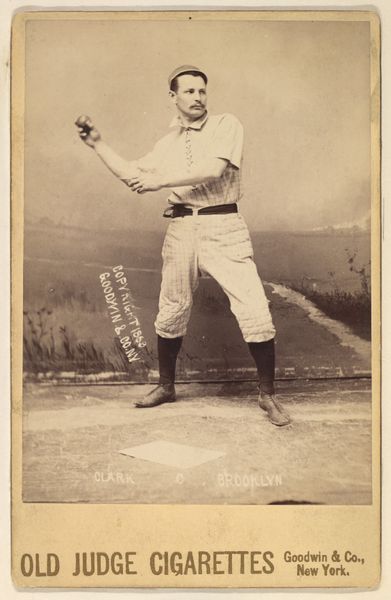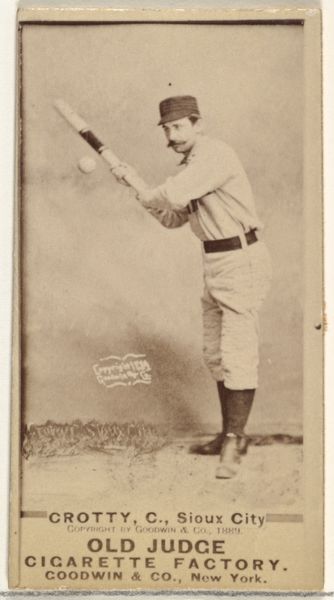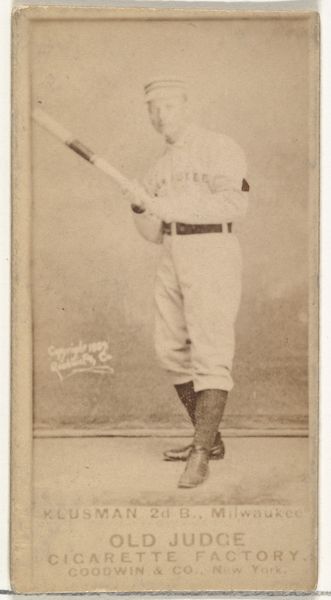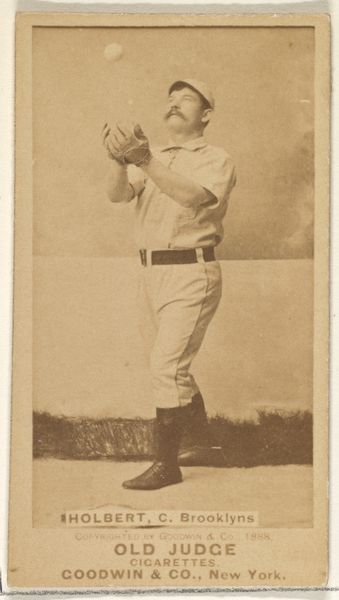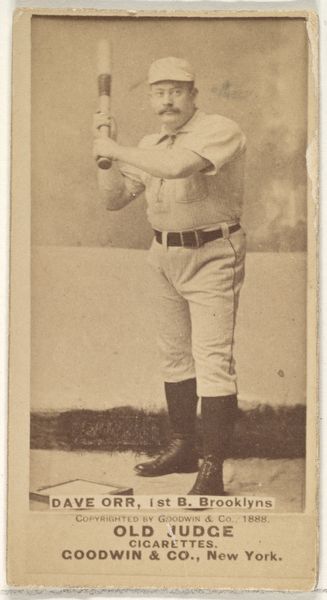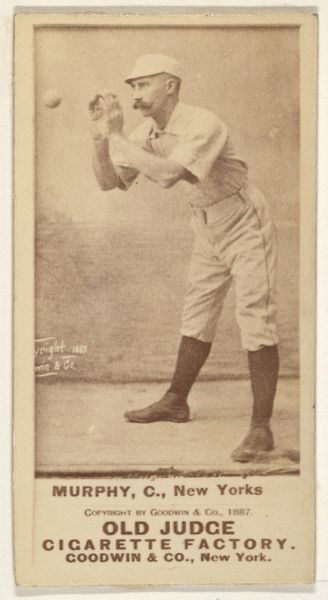
Murphy, Catcher, New York, from the series Old Judge Cigarettes 1887
0:00
0:00
drawing, print, photography, gelatin-silver-print
#
portrait
#
drawing
# print
#
baseball
#
photography
#
historical photography
#
gelatin-silver-print
#
19th century
#
men
#
athlete
#
realism
Dimensions: sheet: 6 1/2 x 4 3/8 in. (16.5 x 11.1 cm)
Copyright: Public Domain
Curator: Here we have a gelatin-silver print titled "Murphy, Catcher, New York, from the series Old Judge Cigarettes." It dates back to 1887, part of a series by Goodwin & Company. What are your immediate impressions? Editor: There's something strikingly vulnerable about this portrait, almost hesitant. The muted tones soften the athleticism we might expect; he seems caught between action and contemplation. Curator: It's interesting that you pick up on vulnerability. These baseball cards, inserted in cigarette packs, weren't simply celebrations of sporting prowess. Consider the implications of associating these athletes, often from working-class backgrounds, with tobacco, a product increasingly tied to moral anxieties at the time. Editor: The baseball itself floats like an ethereal globe, doesn't it? A symbol of chance, of potential—but also the transience of the game, of fleeting fame. I see a parallel to older vanitas paintings where objects allude to life's brevity. Curator: Absolutely. And think about the power dynamics. These images were commodities. The players had little to no control over how their likenesses were used to generate profit, which speaks volumes about labor, image rights, and early forms of celebrity culture. Editor: His uniform feels oddly timeless. Even divorced from the branding at the bottom, you sense a specific era, yet baseball's enduring appeal makes the image relatable today. It connects past to present through archetypal sporting imagery. Curator: This photograph embodies the paradoxes inherent in American culture at the end of the 19th century: industrial expansion, the rise of mass culture, anxieties surrounding masculinity, class, and the commercialization of leisure. It reminds us to always question whose stories are being told and how. Editor: Indeed. The baseball player, transformed into an emblem through a carefully staged shot, encourages us to read beyond the surface. It reveals both personal narrative and collective cultural myth. Thank you for that fascinating perspective.
Comments
No comments
Be the first to comment and join the conversation on the ultimate creative platform.

